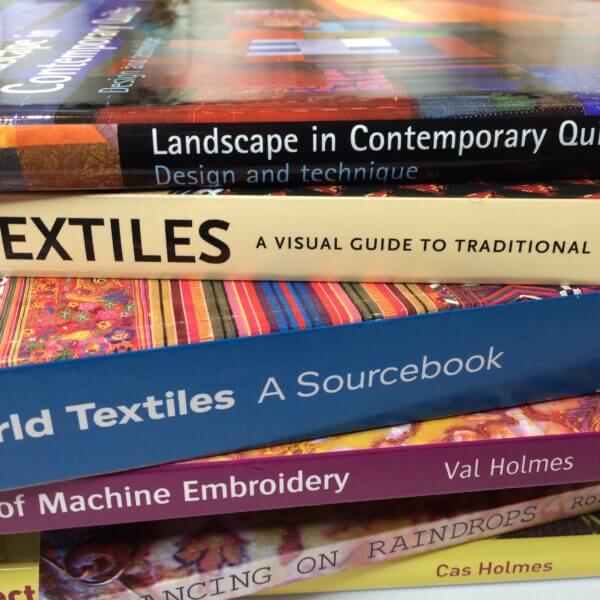If you listen to the podcast, you’ll know why I chose the three books that ended up on my shortlist: Mixed Media Explorations by Beryl Taylor, Machine Embroidery Stitch Techniques by Val Campbell Harding and Pam Watts, and Celtic Art: The Methods of Construction by George Bain.
To be honest, it was very hard to choose just three books. I lurch from loving all of my books, to wondering why I have them when I don’t look at them that much? As I discussed in the podcast, I think it’s mostly a comfort – to know they’re there if I want to day dream for a while, or get a bit of a boost, and occasionally, I use them for answers to specific technique questions. The three I chose are a good representative sample of the sorts of books I have, but I could easily have chosen three completely different ones!
So which books could have made the list?
This was the second book that got me started on using paper in textile art. I’ve evolved my own way of using paper now, and a lot of the techniques in the book are in my own repertoire (like rust printing fabric) but I keep it because I just love her work, and her style.
In a similar vein, this is one of those books that I came across one Christmas, and bought as a present to myself for just those occasions when I want to sit down with a cup of tea and be inspired. The whole book is full page photographs of her work, which incorporates all my favourite things: paper, fabric scraps and all sorts of recycled bits and bobs. Heavenly!
Another old favourite, that I used to borrow on repeat from the library until I finally bought my own copy. I’m not a quilter, nor aspire to be one, but I just love some of the pieces highlighted in the book – especially the cover image, which reminds me of paintings by Francis Boag. My favourite textile pieces in the book are credited to a textile artist who I’ve never been able to track down, Judith Hill. If anyone knows any more, please get in touch!
I also love world textiles – Indian in particular (it must be the shiny mirrors, magpie that I am!). I love the bright but slightly muted colours from natural dyes, the beads and buttons and mirrors, and the texture of the rough fabrics and the heavy stitch. But I’m also drawn in by the symbolism, and the layers of tradition and superstition. Some of my favourite books in this genre are:
Sheila is a world expert on tribal societies and textiles, and has written numerous books including The Afghan Amulet, the start of a the wonderful series of books that are almost like travel books, describing her journeys to discover more about the origins of the textiles she finds in the course of her work.
And finally,
This is another machine embroidery book that I have found useful over the years. Worth having if you want to learn more!








3 Thoughts to “Favourite Textile Books Part 2!”